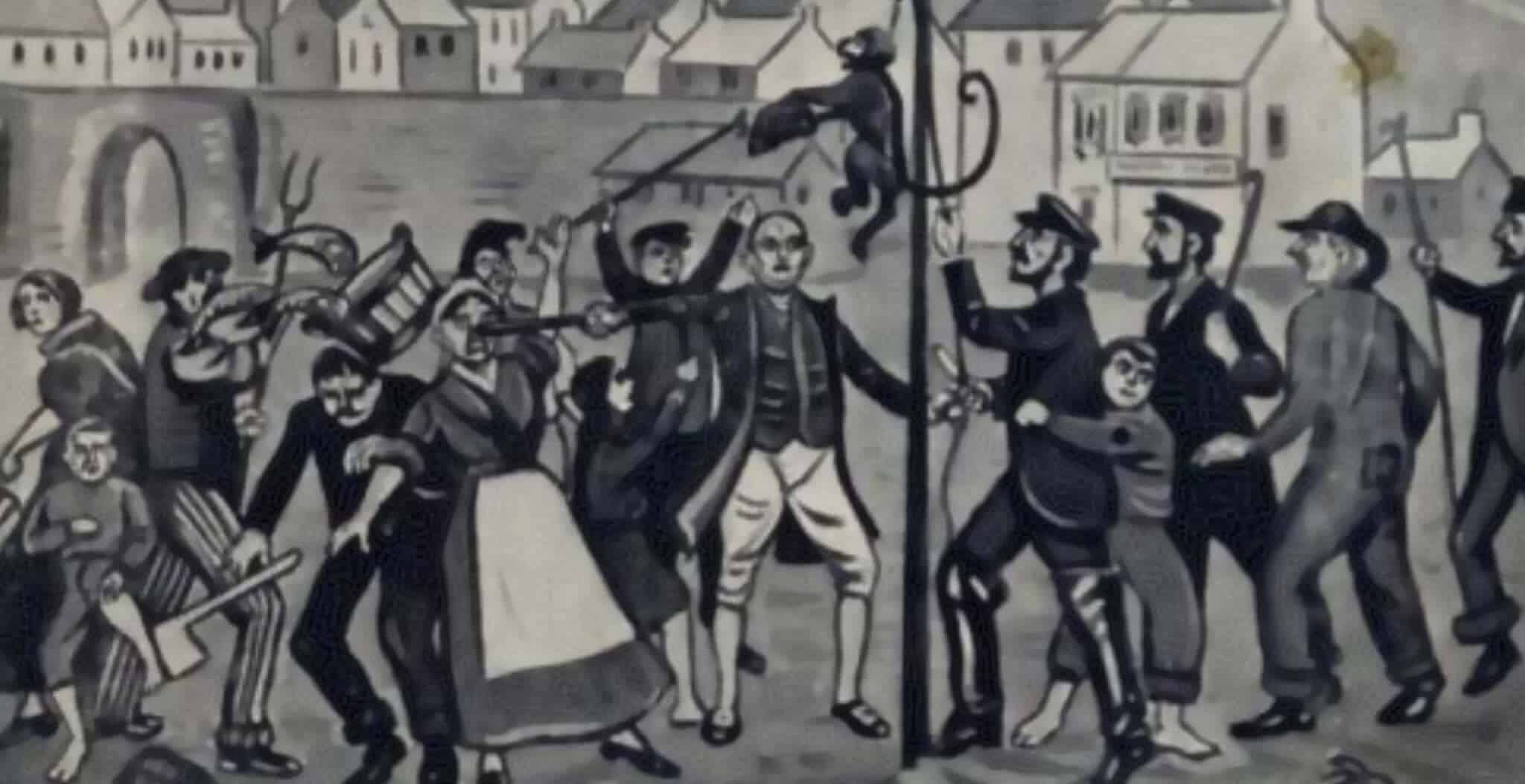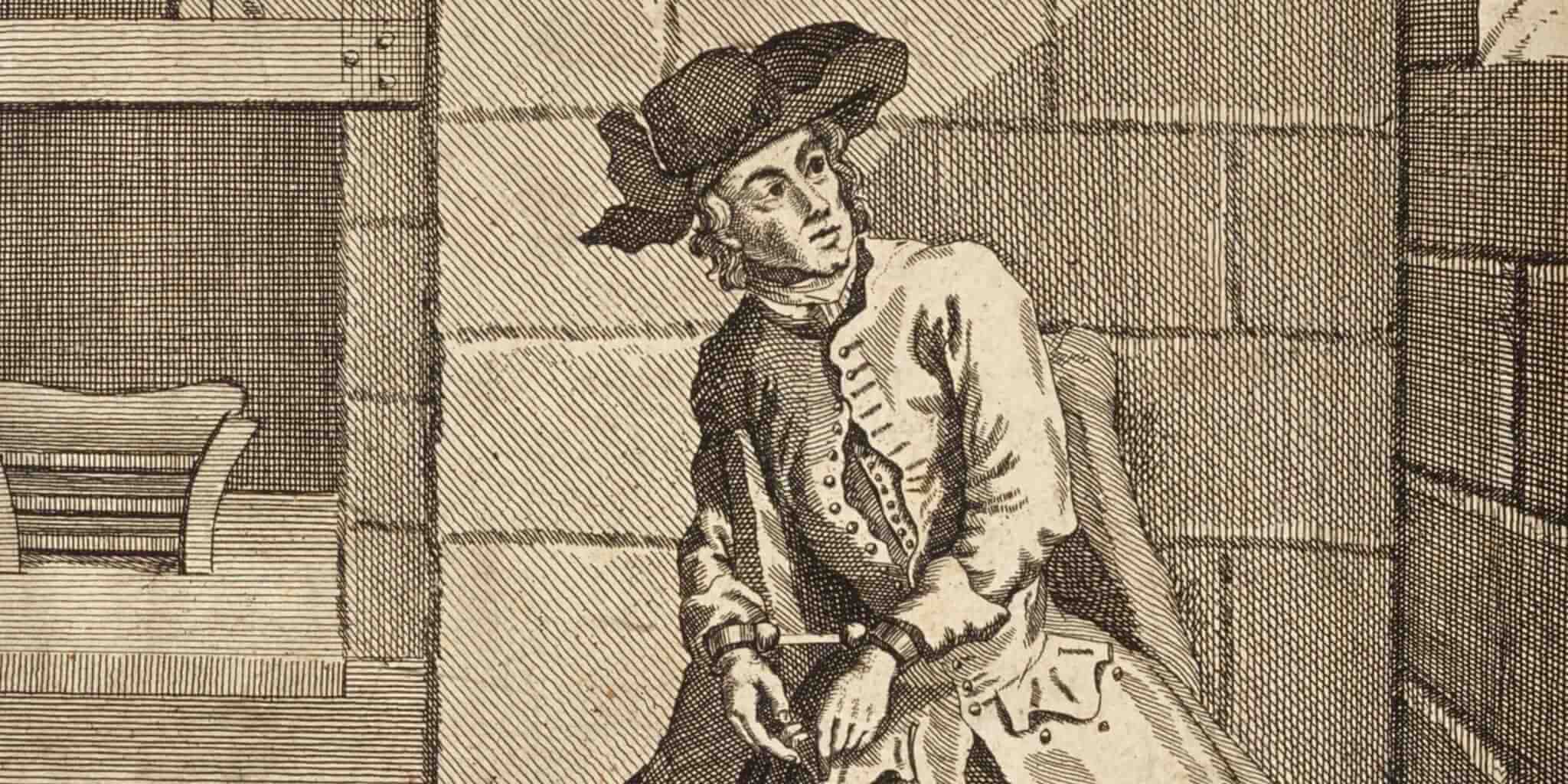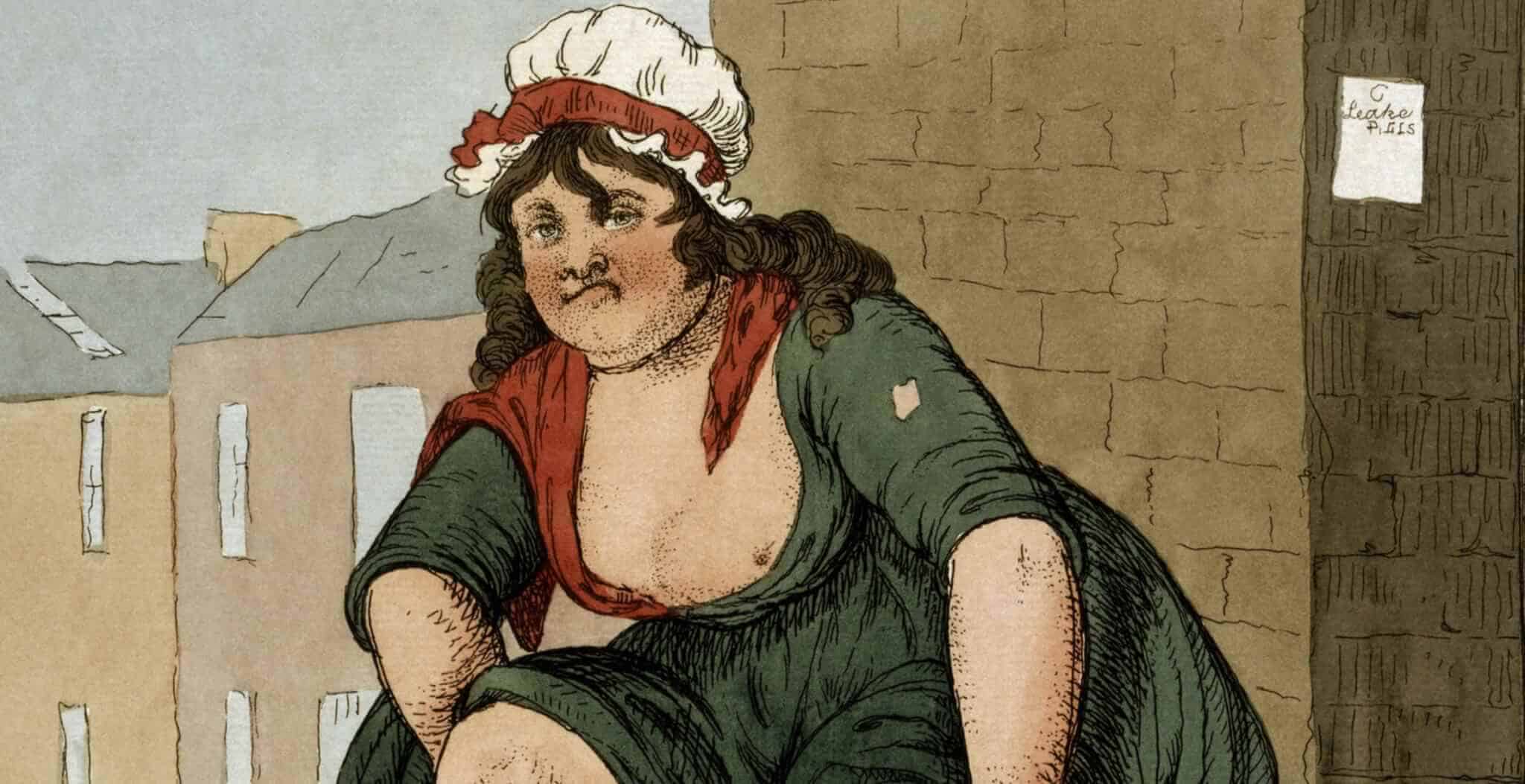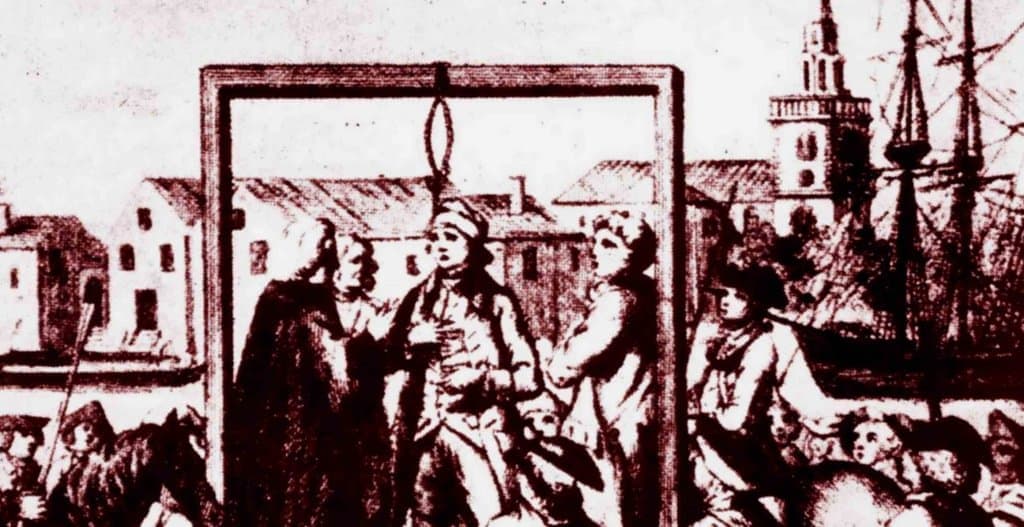“Executions are so much a part of British history that it is almost impossible for many excellent people to think of a future without them” – Viscount Templewood, In the Shadow of the Gallows (1951)
As a form of capital punishment, hanging was introduced to Britain by the Germanic Anglo-Saxon tribes as early as the fifth century. The gallows were an important element in Germanic culture. The worthy Hengist and Horsa and their colleagues used a very rough and out-of-hand method of hanging, one that resembled our clean and tidy modern method in only this respect: it worked quite well.
William the Conqueror subsequently decreed that it should be replaced by castration and blinding for all but the crime of poaching royal deer, but hanging was reintroduced by Henry I as the means of execution for a large number of offenses. Although other methods of execution, such as boiling, burning and beheading were frequently used in the mediaeval period, by the eighteenth century hanging had become the principle punishment for capital crimes.
The eighteenth century also saw the start of the movement for the abolition of the death penalty. In 1770 [the British Politician] William Meredith, suggested ‘more proportionate punishments’ for crimes. He was followed in the early nineteenth century by [the legal reformer and Solicitor General] Samuel Romilly and [the Scottish jurist, politician and historian] James Mackintosh, both of whom introduced bills into Parliament in an attempt to de-capitalise minor crimes.
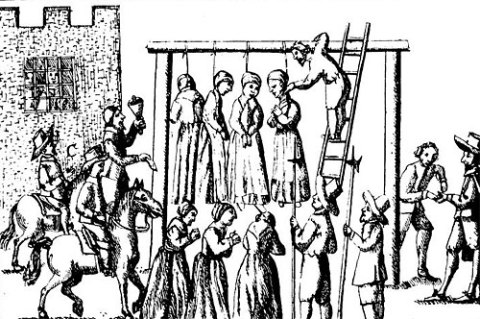
Witches being hanged, from Ralph Gardiner, ‘England’s Grievance Discovered in Relation to the Coal Trade’, 1655
Perhaps unsurprising, considering the fact that in Britain at the time there were no less than 222 crimes which were defined as capital offenses, including the impersonation of a Chelsea pensioner and damaging Westminster Bridge. Moreover, the law did not distinguish between adults and children, and ‘strong evidence of malice in a child of 7 to 14 years of age’ was also a hanging matter.
It was not until 1861 that that the number of capital crimes was reduced to just four by the Criminal Law Consolidation Act, these being murder, arson in a royal dockyard, treason and piracy with violence. Further reform followed, and the last public hanging took place in 1868, after which all executions were carried out within prison walls.
In the nineteenth century the mechanics of hanging came under scientific scrutiny. Certain suggestions and improvements were adopted after which sweeping claims were made that the newly introduced trick for dislocating the neck was a vast improvement on the slower method of simple strangulation hitherto used.
How Hanging Kills
The position [of the brass ring] behind the ear has distinct advantages and is best calculated to cause instantaneous and painless death, because it acts in three different ways towards the same end. In the first place, it will cause death by strangulation, which was really the only cause of death in the old method before the long drop was introduced. Secondly, it dislocates the vertebrate, which is now the actual cause of death. And thirdly, if a third factor was necessary, it has a tendency to internally rupture the jugular vein, which in itself is sufficient to cause practically instantaneous death.
However, there is a simple truth behind it all, and it is this: In spite of all the progress we have witnessed, it is not possible for the greatest physician, biologist, or any other scientist to define the exact moment when a hanged person ceases to feel pain. Pro-hanging propaganda states that “death by hanging is almost instantaneous” “Almost”, in relation to hanging, can allow for a period of time which may not be more than two or three minutes, or it can be a quarter of an hour, or as it has happened, much longer such as the one hour and eleven minutes taken to hang Antonio Sprecage in Canada in 1919. An intelligent law takes care of this in the sentence “to be hanged by the neck until dead”. The operative words are “until dead”.
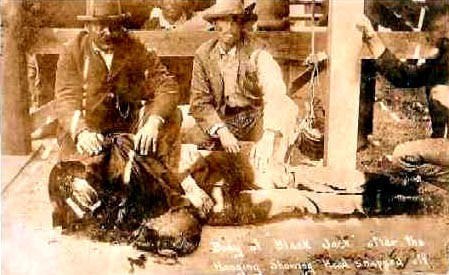
Sepia-tone photo from a 1901 postcard of Tom Ketchum’s decapitated body after hanging.
Caption reads “Body of Black Jack after the hanging showing head snapped off.”
Bungled Hangings
Hangmen and other government officials concerned with executions in Britain spoke with awe of the “Goodale Mess” – the hanging of a man called Goodale, at which the prisoner’s head was jerked right off the body – and one of their terrors was that, because of some slight oversight, it could be easily repeated. To avoid anything so unseemly a man named William John Gray, sentenced to death for the murder of his wife, was reprieved in April 1948. After shooting his wife, Gray shot himself, fracturing his jaw. Medical examination showed that the injuries caused were of such a character that “as make it impractical to carry out the execution”. This could mean one of two things: that he might die from strangulation because of a failure of the brass eyelet to cause dislocation; or that, to cause dislocation, he would have to be given a drop so long that his head might be pulled off. Hence, in the interests of both humanity and hanging, it was much safer to grant him a reprieve.
In 1927 the British Medical Journal published another account by an ex-colonial surgeon of a botched hanging. He stated that he had to witness the execution of four natives. The executioner was in a hurry that day to keep another appointment, and decided to hang the men in pairs. As a general rule, on auscultation the heart may be heard beating for about ten minutes after the drop, and on this occasion when the sounds had ceased, there was nothing to suggest a vital spark. The bodies were cut down after fifteen minutes and placed in an ante-chamber, when one of the supposed corpses gave a gasp and was found making spasmodic respiratory efforts. The two bodies were quickly suspended again for a quarter of an hour longer.
Another great figure in the annals of hanging is John Lee. It is necessary to say on behalf of the late Mr Berry, who officiated at the long drawn-out hanging process, that he was in every way qualified to perform the task. But the cruel fact remains. Three times he tried to hang John Lee on Monday 23 February 1885; and three times he failed. The failure to hang John Lee was officially explained as due to rain which had caused the planks of the trap to swell. This may well have been the case. It has been suggested that the failure to deal adequately with John Lee is a proof provided by Providence of his innocence. Maybe. Or perhaps it can be attributed to immunity from hanging developed by heredity in accordance with Mendel’s theory. Incidentally, John Lee lived to a ripe and contented old age.
Yet it was to be almost one hundred years before hanging was to disappear completely from the British justice system. On 9 November 1965 the Murder (Abolition of Death Penalty) Act suspended the death penalty for murder for five years in the United Kingdom and, on 16 December 1969, the House of Commons voted by a majority of 158 that capital punishment for murder should be abolished. Even after this the death penalty theoretically survived for treason, piracy with violence, arson in a royal dockyard and certain crimes under the jurisdiction of the armed forces, but with the ratification of the 6th protocol of the European Convention on Human Rights on 20 May 1999, all provisions for the death penalty were finally abolished in the United Kingdom.
Worldwide the death penalty is still retained in 77 countries as a way of dealing with a range of crimes. However, the ‘humanity’ of hanging and other forms of execution raises important questions as to the wisdom of a punishment which allows little room for error on the part of an eminently fallible justice system.
© Excerpts from ‘A Handbook on Hanging’ by Charles Duff



